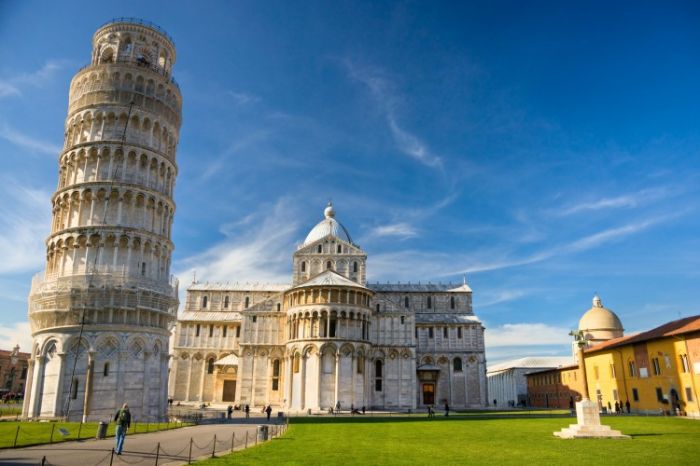
Italy conjures up many images of sunny beaches, olive gardens and generous helpings of pizza in us all. With the advice from Vivianna of Rome Private Guides, a group of local tour guides in Italy, let’s have a look at a couple of the biggest and best locations for a first-time visitor to have a peak at.
The Coliseum
Iconic in film, photo and synonymous with Rome, the Coliseum is one of the Roman’s greatest feats of engineering, and it is the largest amphitheatre in the world. This mighty fortress of stone and concrete could once contain up to 80,000 spectators, entertaining the Roman population with animal hunts, battle re-enactments, plays, public executions and, of course, gladiatorial battles. As both a world heritage site and one of seven New Wonders of the World this location is unmissable. Come here to bask in the presence of the ultimate image of Roman history. Though slowly turning to ruins, much of the features from the amphitheatre’s creation nearly 2000 years ago still remain. It is also possible to view parts of the underground section of the Coliseum; tunnels that lead to the gladiator school and animal pens, the remnants of sewage facilities and more can still be seen on guided tours to this restricted area.
Venetian Canals and Festival
Set in stone is the image of the gondola, hunched over with a paddle in his hand, taking his wards on a slow and romantic journey through the rippling water and cream-stoned canals of Venice. If you have the chance to make a short trip here, it’s a vital Italian experience. For anyone looking to witness a truly surreal and beautiful experience, arriving in Venice during its annual Carnival never ceases to amaze. First started after the Republic of Venice decreed it illegal to wear masks at night, these costumes allowed people to take on the role of a character and enjoy the city incognito, blurring the lines between the classes. In modern times it has become a stunningly eccentric display of creativity and living history. As well as the costumed people lining the streets, entertainers and artists provide original performances based on a main subject chosen by carnival officials.
Leaning Tower of Pisa
Originally created as a bell tower, this instantly recognisable tower of marble and stone was built partly on ground that was too soft to support it, so it began to during its construction, tilting more and more the right as the centuries flew buy. If you visit the tower today, it actually leans less than it did 100 years ago due to efforts in the 20th and 21st century to stabilise and partially right its position. Entrance is restricted, but any trip to Italy would be hollow without the obligatory picture of someone trying to push the tower over.
Vatican Museums and Sistine Chapel
Official residence of the Pope in Vatican City, this awe-inspiring chapel is covered in art by the icons of the Renaissance, Botticelli, Perugino and the infamous ceiling Frescos including ‘The Last Judgment’, painted by Michelangelo himself. The chapel is open the public as part of admission the Vatican Museums, which house a variety of sections based of Italian history alongside an Egyptian exhibition and historical exhibits of ceramics and tapestries. Vatican City is often a Catholic site of pilgrimage, and if you wish to enter the chapel you must cover your shoulders, hair (if you are female) and legs, though skirts/shorts reaching the knees are permissible.
Pompeii
Situated near modern Naples, Pompeii was an ancient Roman City turned to ash and ruins by the eruption of Mount Vesuvius in 79AD. After the disaster, the site lay undiscovered for more than 1500 years, and has been a popular tourist destination for the last 250. Walking into Pompeii is a step back in time. Many of the objects, roads and parts of buildings discovered have been extremely well preserved due to the almost total restriction of air and moisture. A slightly eerie sight, plaster casts of ash layers have revealed a number of human bodies, showing the positions they lay in when they died. Some of these have been left on site and others have been kept in Italian museums. The location can be visited through a touring company or you can arrive and walk around yourself.
Capuchin Crypt
A darker turn to the strong cultural locations in the list, the crypt of the capuchins is a shrine to the monks of the past that lies under the church of Santa Maria della Concezione dei Cappuccini. It is thought that the majority of the bodies were of 300 deceased Friars, cart loaded to the monastery by the Capuchin monks that arrived there in the 1600s. Those that died after this time were then added the crypt after being buried for at least 30 years. While a morbid sight, the crypts have a strange elegance and peacefulness to them, reminding us that death is ever present in our lives regardless of religious affiliation.

Gondolas docked for the day.









